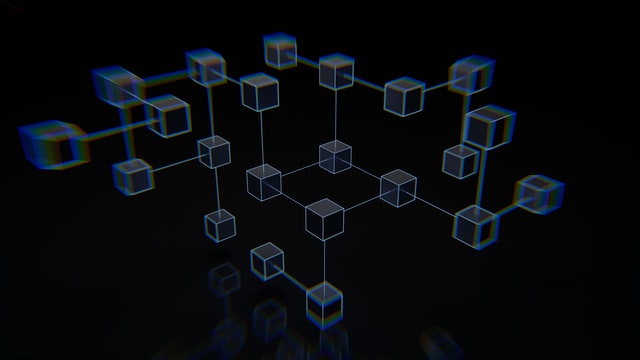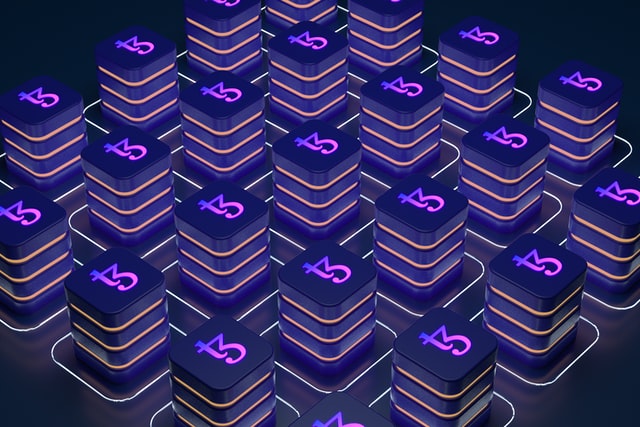What is a Blockchain?
A blockchain is a distributed network that serves as a database for digital transactions through secure platforms solely between a dealer and a customer. Blockchains serve as the ‘mediator’ that supervises digital exchange. At the same time, it permanently records transactions, ledgers, made to promote transparency amongst users participating in the system. The ability to secure transactions is great but what is special about blockchains specifically? Blockchains ensure that transaction records are maintained securely, allowing trusting of the system.
Blockchains are unique, compared to other databases, because blockchains store information in blocks that are continuously being filled on and attached to blocks already filled to its maximum storage potential. Each block is linked together with cryptography. This allows the blockchain to remain permanent and impossible to change the time and content of transactions. Blockchains are designed to have the same encrypted data of each transaction distributed to all its users. This prevents control maintenance from one individual, and for the power to be distributed among all users who are capable of comparing their own copy of the database with other databases.
All transactions through blockchains have a node that is unique to a single object through transaction. This easily allows the items to be tracked from one owner to another. This prevents any flaw in the system since all tracks can be traced from one individual to another, despite the conditions and anonymity of participants.
Types of Blockchains
Different types of blockchain technology have been created since the first introduction of blockchain technology to accommodate a variety of users. There are currently three types of blockchains: public blockchain, private (permissioned) blockchain, consortium (federated) blockchain, and hybrid blockchain.
A public blockchain is a network that allows anyone to access blockchains without permission or restrictions. Therefore, a public blockchain can be accessible to anyone, as well as the ability to become an authorized node. Users are able to acquire data from the blockchain, verify transactions between parties, and “do mining”. Being able to “do mining” means being able to participate in the competition to verify and add new transactions in existing blockchains through “proof-of-work method”, used to confirm transaction accuracy.
A private blockchain limits who can access data stored in a blockchain that is managed by organizations the blockchain is in service to. A private blockchain network allows an administrator to authorize nodes and monitor the information that is passed around. This prevents private data from being shared with others. However, it is possible to add new nodes into the network with the condition that the network supervisor grants the node permission.
Consortium blockchains are controlled more strictly by only allowing selected nodes to access all data in the blockchain network. Consortium blockchain is used with more than one organization administering a blockchain. Multiple nodes from different organizations are able to exchange data or do mining. As a result, this is typically used by larger and general organizations.
A hybrid blockchain contains features from private and public blockchains which allows participants to choose based on their preferences. Users decide on accessibility of data in parts of a blockchain. This way, some data is confidential to a certain group of users. A benefit of using a hybrid blockchain is that it is possible to make private transactions, but later publicize the blockchain if necessary.
Basic Construction of Blockchains
There are important parts to ensure that the system designed for blockchains is maintained. Firstly, blockchain blocks store data such that each block is filled to its maximum capacity. Each block, after completely full, is linked to previously filled blocks with chains in order of transaction of chronological order. The second part of a blockchain is the consensus algorithm ensures that all participants abide by rules that are set within blockchain systems. Miners verify blocks before permanently adding it to the blockchain. Lastly, blockchain nodes are data stored in nodes that ensures that all encrypted data of users are updated after any changes are made, additions to the blockchains. This occurs through the synchronization of existing nodes and every new node after it saves all the previous data.
Blockchain Applications
There are many benefits that come with blockchains that may very well be a dependable system for all transactions in the future. Blockchains are reliable resources to promote safety and exchange between individuals. It allows people to have more opportunities to succeed by connecting them with consumers across the Web. At the same time, it ensures that all participants would be wise enough to avoid changing or providing false information.
With blockchains as a start, it is possible to utilize the concept of blockchains to create smart contracts and payments in the future. Smart contracts are able to simplify the efforts needed to sign reliable contracts between two business parties. In addition, payments can be made more accessible and traceable to ensure trust with customers as well. Blockchains may also be applied to government management to allow quick access to verify or sign certificates and documents by the government to authenticate other important documents. There are still many existing options that are possible and the solutions listed are only a portion of the possibilities blockchains may bring.
Sources
https://www.blockchainresearchinstitute.org/an-intro-to-blockchain-and-nfts/
https://www.investopedia.com/terms/b/blockchain.asp
https://www.oracle.com/middleeast/blockchain/what-is-blockchain/
https://constructionblog.autodesk.com/blockchain-in-construction/
https://www.softwaretestinghelp.com/blockchain-application-examples/
https://data-flair.training/blogs/types-of-blockchain/




